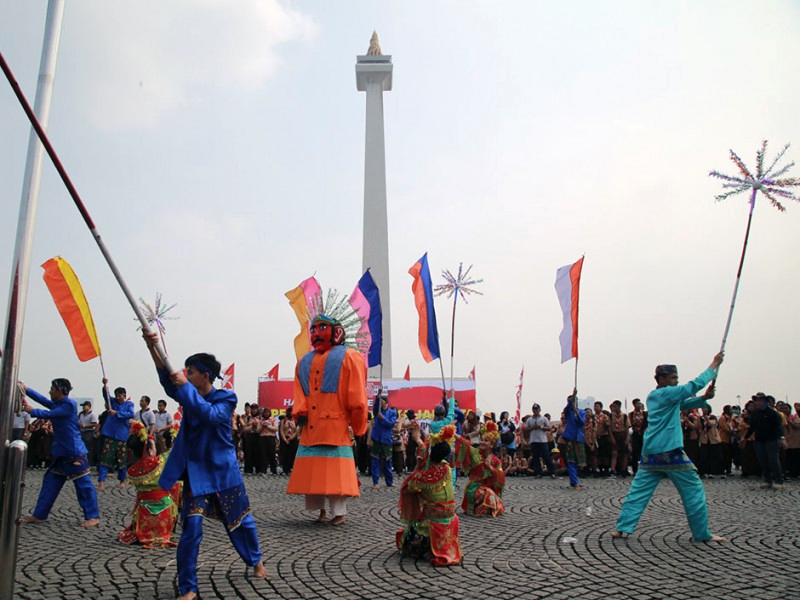Gov Pramono: Jakarta is the Best Example of Food Downstreaming
Reported by Dessy Suciati | Translated by Nugroho Adibrata
Jakarta Governor, Pramono Anung, received a visit from the Domestic Strategic Study (SSDN) of the National Leadership Strengthening Education (P3N) XXV for the 2025 fiscal year at Great Hall, Jakarta City Hall, Wednesday (6/11).
T he best example is Jakarta
He emphasized that Jakarta is the best place to study non-mining downstream processes and supply stabilization, especially for food commodities.
"If we are talking about activities related to non-mining, non-natural resources based downstream, the best example is Jakarta," he added.
City Gov Still Evaluating the Implementation of Car Free NightIn front of the P3N participants, he presented Jakarta's success in maintaining the stability of supply and prices. He cited, the number of sacrificial cows slaughtered during Idul Adha reached 71,000, as prices in Jakarta were more competitive compared to surrounding areas.
More competitive prices in Jakarta are driven by smooth distribution processes. Besides, the price of rice in Jakarta is also said to be the most stable, even though it only has two percent of agricultural land.
According to him, this is inseparable from the downstream process in Jakarta that has been running well for a long time. One of the ways is through the role of Food Station, which collaborates with rice-producing regions, such as Karawang, Lampung, and Kediri.
"Including my hometown. It is taken quite largely from Kediri. Why? Because first, the consumers are already captive, which is quite high. In Jakarta now, it's about 10.8 million," he added.
The collaboration between the Jakarta Government and these food-producing regions not only benefits consumers in Jakarta but also farmers in those areas.
He mentioned that various prices of basic necessities in Jakarta are well-maintained. In fact, the inflation rate is always below the national inflation rate. Hence, the Jakarta provincial government will continue to strive to maintain price stability, supply availability, smooth distribution, and effective communication with the public.
Nevertheless, Jakarta still has a major issue that needs to be addressed, namely the disparity and Gini ratio of income inequality among Jakarta people.
"The difference between the rich and the poor in Jakarta over time is not decreasing, but increasing. Therefore, this is the Governor's main responsibility right now," he asserted.
Therefore, to improve people's welfare, the Jakarta Government distributed the Jakarta Smart Card (KJP) to 707,622 students worth Rp 1.6 trillion and Jakarta Superior Student Card (KJMU) worth Rp 350 billion to break the cycle of poverty through education up to the doctoral level.
In the field of transportation, he explained the high public interest in the opening of new public transport routes, such as Alam Sutera-Blok M to Bogor-Blok M. This effort is to encourage people to switch to public transport.
Meanwhile, National Resilience Institute (Lemhannas) Governor, Tubagus Ace Hasan Syadzily, expressed his gratitude for Jakarta Governor's willingness to receive his team's visit.
According to him, the visit is relevant to the theme being presented, which is about downstream processing and economic independence towards a globally competitive Indonesia.
"It feels very relevant for us to visit the Governor where the downstream activities are, and the downstream is Jakarta," he added.
He hoped that the study conducted by Lemhannas could provide concrete benefits for the efforts to realize Indonesia Maju 2045.
"Because I think as a global city, Jakarta has a strategic role to transform raw commodity materials and in Jakarta, this can lead to downstream processing," he said.





